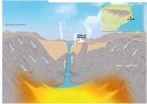(Press-News.org) Language barriers could deter more than 100,000 Californians from enrolling in the Health Benefit Exchange, according to a study released today by the California Pan-Ethnic Health Network, the UCLA Center for Health Policy Research, and the UC Berkeley Center for Labor Research and Education.
The study presents findings from a UC Berkeley–UCLA micro-simulation that estimates the likely enrollment in health care reform programs in California. Specifically, the study projects that more than 1 million limited–English proficient (LEP) adults will be eligible to receive tax credits to purchase affordable coverage in the state's Health Benefit Exchange, which expands access to affordable health coverage as part of the Patient Protection and Affordable Care Act.
However, only 42 percent of eligible LEP adults are expected to enroll in the program.
"The evidence suggests that Californians who do not speak English very well are at a disadvantage in terms of accessing health care reform programs," said Daphna Gans, a research scientist at the UCLA Center for Health Policy Research and the lead author of the study.
The UC model shows that if language is not a barrier, participation by LEP adults could increase to 53 percent, a difference of approximately 110,000 individuals.
"These are difficult times for California families, and ensuring every Californian has access to quality, affordable health care is vital for our economic recovery," said California Assembly Speaker John A. Pérez, who authored legislation (AB 1602) in 2010 establishing the exchange. "The Health Benefit Exchange will help lower the cost of health insurance for every Californian, but it's vital for every eligible Californian to enroll to ensure we bring health care costs down as much as possible for California's working families."
In California, more than 15 million residents speak a language other than English at home and nearly half (7 million) of them have limited proficiency in English. The study shows the importance of adopting a diverse strategy for outreach and education.
"The exchange is a key opportunity to make Californians healthier," said Ellen Wu, executive director of the California Pan-Ethnic Health Network. "We have to do this right. Our success in implementing this new program will be measured not just by the number of people enrolled but by the state's ability to reach those who are most often left behind. We have to target resources through multicultural and multilingual outreach to ensure that communities of color who are eligible, particularly people who speak English less than very well, enroll in coverage."
The study was conducted based on analyses using the California Simulation of Insurance Markets model, a micro-simulation developed by UCLA and UC Berkeley researchers, which uses a range of official data sources (including the California Health Interview Survey) to estimate the impact of various elements of the Patient Protection and Affordable Care Act on employer decisions to offer insurance coverage and on individual decisions to obtain coverage in California.
The development of the model was supported through funding by The California Endowment, the California Health Benefit Exchange and the California Pan-Ethnic Health Network.
INFORMATION:
Read the study, "Achieving Equity by Building a Bridge From Eligible to Insured."
The California Pan-Ethnic Network (CPEHN), celebrating 20 years as a champion for health equity, works to eliminate health disparities by advocating for public policies and sufficient resources to address the health needs of communities of color.
The UC Berkeley Center for Labor Research and Education is a public service and outreach program of the UC Berkeley Institute for Research on Labor and Employment that conducts research and education on issues related to labor and employment.
The UCLA Center for Health Policy Research is one of the nation's leading health policy research centers and the premier source of health policy information for California.
For more news, visit the UCLA Newsroom and follow us on Twitter.
Study: Over 100,000 Californians likely to miss out on health care due to language barriers
2012-03-01
ELSE PRESS RELEASES FROM THIS DATE:
Canadian scientist develops world's most advanced drug to protect the brain after a stroke
2012-03-01
Toronto, February 29, 2012 - Scientists at the Toronto Western Research Institute (TWRI), Krembil Neuroscience Center, have developed a drug that protects the brain against the damaging effects of a stroke in a lab setting. This drug has been in development for a few years. At this point, it has reached the most advanced stage of development among drugs created to reduce the brain's vulnerability to stroke damage (termed a "neuroprotectant"). Over 1000 attempts to develop such drugs by scientists worldwide have failed to be translated to a stage where they can be used in ...
CU team's efficient unmanned aircraft jetting toward commercialization
2012-03-01
Propulsion by a novel jet engine is the crux of the innovation behind a University of Colorado Boulder-developed aircraft that's accelerating toward commercialization.
Jet engine technology can be small, fuel-efficient and cost-effective, at least with Assistant Professor Ryan Starkey's design. The CU-Boulder aerospace engineer, with a team of students, has developed a first-of-its-kind supersonic unmanned aircraft vehicle, or UAV. The UAV, which is currently in a prototype state, is expected to fly farther and faster -- using less fuel -- than anything remotely similar ...
Contamination of La Selva geothermal system in Girona, Spain
2012-03-01
Monitoring the construction of wells, avoid over-exploiting cold groundwater close to hot groundwater, and controlling mineral water extraction. These are the recommendations from the Polytechnic University of Catalonia and the University of Barcelona, after analysing the contamination of La Selva geothermal system, above all by arsenic pollution. In this region, which is known for its spa resorts and bottling plants, as well as in other Catalan coastal mountain ranges, uranium levels higher than what is recommended by the WHO have been detected.
The groundwater in La ...
Atlanta Pest Control Experts, Team Pest USA, Open New Office in Gainesville, GA
2012-03-01
Atlanta pest control company Team Pest USA has opened a new location offering pest control services in Gainesville, GA. This latest expansion is the most recent example of the continued growth that Team Pest USA has maintained over the past four decades.
Since 1971, Team Pest USA has been providing outstanding pest control in Atlanta, and that dedication to reliable pest control services has, in large part, been a reason for the company's continued success and current expansion in Gainesville. Team Pest USA offers an extended list of services, including mosquito control, ...
Scientists learn how insects 'remodel' their bodies between life stages
2012-03-01
It's one of life's special moments: a child finds a fat caterpillar, puts it in a jar with a twig and a few leaves, and awakens one day to find the caterpillar has disappeared and an elegant but apparently lifeless case now hangs from the twig.
Then, when the jar has been forgotten, soft beating against its glass walls calls attention to a new wonder: the jar now holds a fragile-winged butterfly or dusky moth with fringed antennae.
These transformations are so startling that a child's awe seems a more appropriate response than an adult's calm acceptance.
How is it, ...
Study shows earthworms to blame for decline of ovenbirds in northern Midwest forests
2012-03-01
A recent decline in ovenbirds (Seiurus aurocapilla), a ground-nesting migratory songbird, in forests in the northern Midwest United States is being linked by scientists to a seemingly unlikely culprit: earthworms.
A new survey conducted in Minnesota's Chippewa National Forest and Wisconsin's Chequamegon-Nicolet National Forest by a research team led by Scott Loss of the University of Minnesota and the Smithsonian Migratory Bird Center has revealed a direct link between the presence of invasive European earthworms (Lumbricus spp.) and reduced numbers of ovenbirds in mixed ...
Atlanta Countertops Company Premier Surfaces Takes a Shave to Support Employee with Cancer
2012-03-01
Employees at Atlanta granite countertop fabricator Premier Surfaces have shaved their heads to support one of their own. When a beloved team member learned that she would be undergoing chemotherapy treatment for breast cancer, she made the brave decision to shave her head instead of letting the chemo take her hair. The men at Atlanta granite counters supplier Premier Surfaces felt it was important to lend her moral support, and roughly 20 of them shaved their heads with her.
The employee was diagnosed with breast cancer in December of 2011, and began her first chemotherapy ...
EARTH: Listening for gas bubbles
2012-03-01
Alexandria, VA – What if we could cheaply and efficiently detect a potent new energy source, while also monitoring for environmental safety? Olivier Carrière, a physicist in the Marine Physical Laboratory at the Scripps Institution of Oceanography, and other researchers are using the symphony of sound produced in the ocean to do just that.
When natural gas is released from the seafloor, it produces bubbles; similarly, gas leaking from a pipeline also produces bubbles. Instead of traditional acoustic methods that use active surveys of the ocean floor with sonar or seismic ...
AGU Journal highlights - Feb. 29 2012
2012-03-01
The following highlights summarize research papers that have been recently
published in Geophysical Research Letters (GRL), Journal of Geophysical Research-Earth Surface (JGR-F), Journal of Geophysical Research-Atmospheres
(JGR-D), Journal of Geophysical Research-Solid Earth (JGR-B), and Journal of Geophysical Research-Space Physics (JGR-A).
In this release:
1. Effect of vegetation die-off tested on tidal marshland
2. Capsizing icebergs release earthquake-sized energies
3. Asian emissions contribute to air pollution in western United States
4. Remote sensing ...
Old drug reveals new tricks
2012-03-01
A drug once taken by people with HIV/AIDS but long ago shelved after newer, modern antiretroviral therapies became available has now shed light on how the human body uses its natural immunity to fight the virus—work that could help uncover new targets for drugs.
In an article published online this month by the journal PNAS, a group of U.S. and Swiss researchers led by scientists at the University of California, San Francisco (UCSF) presented the first clinical assessment of how this drug fights infections in people. The drug, called interferon, is a biotechnology product ...





